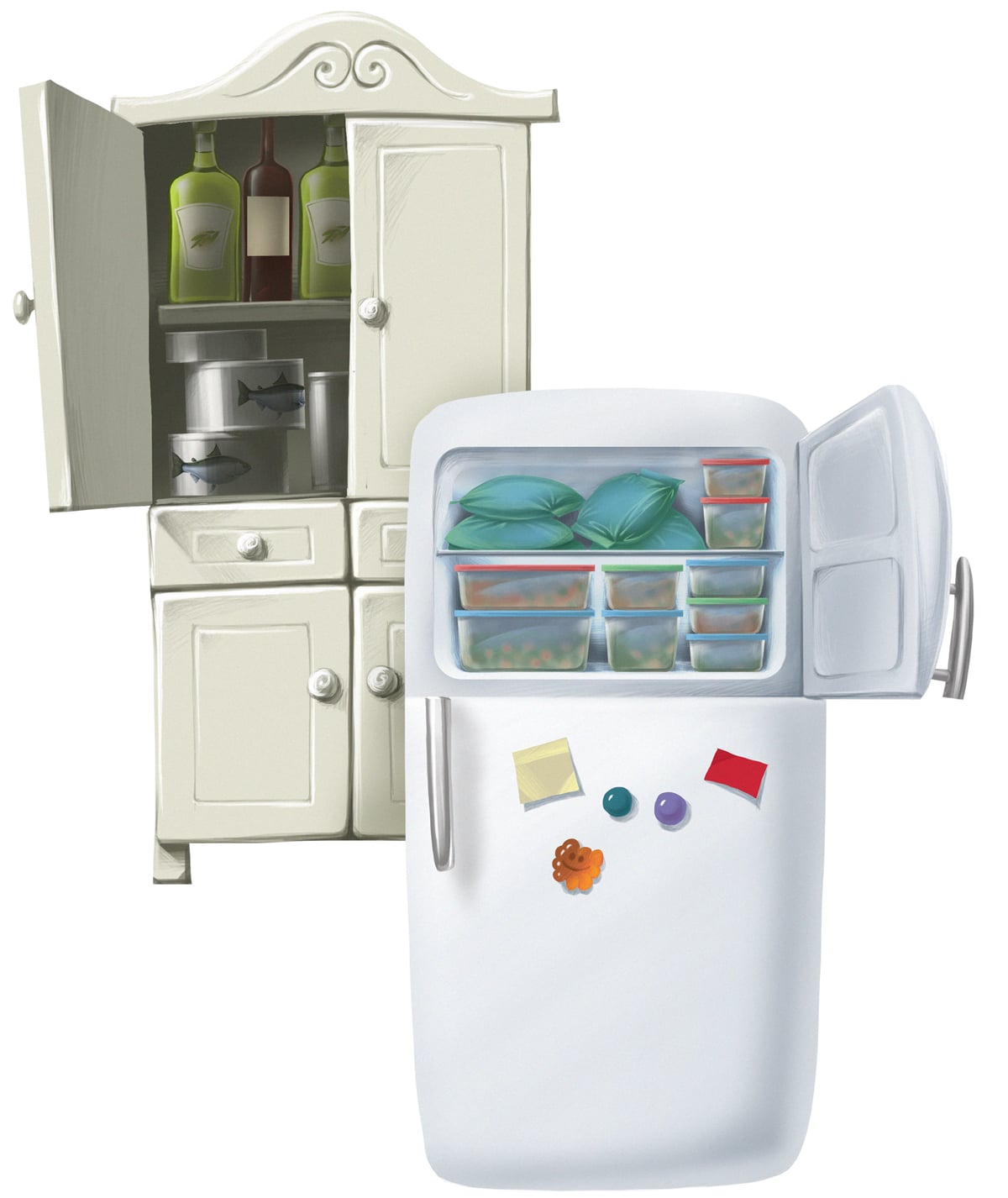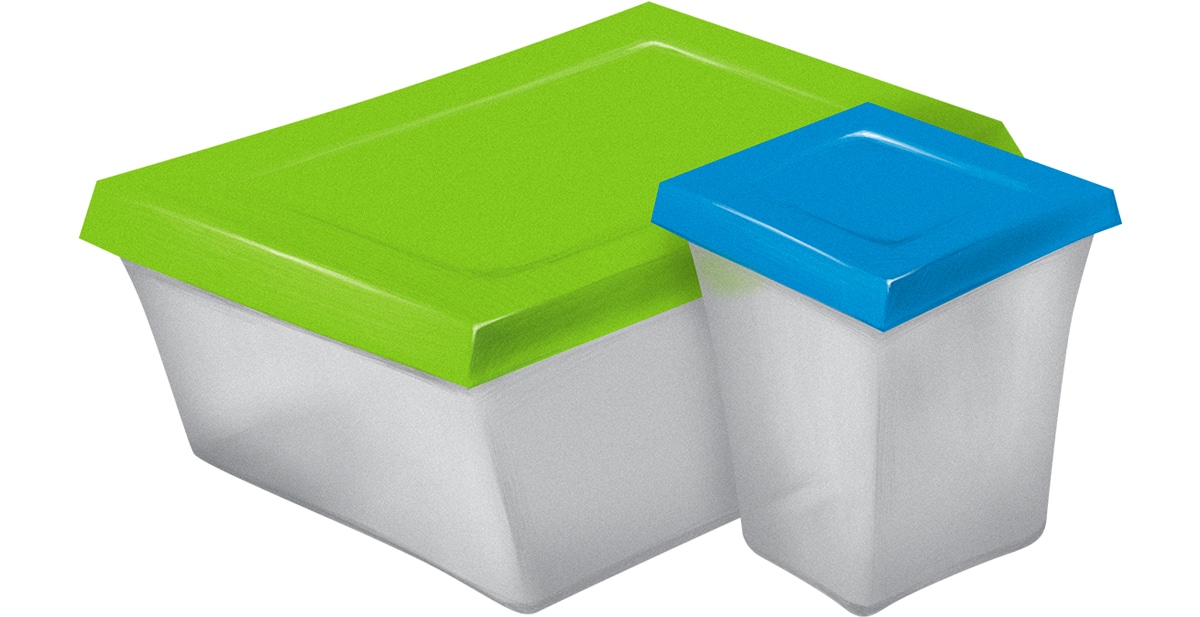You go to the store on Saturday to stock up on groceries.
On Monday evening, you’re about to make some bone broth, but, you realize you forgot the celery and you have to go back for it. (When you return with your hard-won prize, you discover that you did have it after all; it was just hiding behind a big Tupperware of leftover potatoes. So now you have two bunches of celery, one of which you don’t need.)
On Tuesday just before bed, you remember that you don’t have the coconut aminos you’ll need for dinner tomorrow. You have to wake up 45 minutes early to run to the store before work.
On Wednesday afternoon, you’re all ready to head home from work – when you realize you have nothing for dinner, so you stop by the store in a post-work haze and take twice as long as usual to get ingredients just for one meal.
On Friday, you take inventory of your fridge and discover that the Tupperware of potatoes is now wasted food: it’s moldered into a disgusting, stale clump, and you have to throw it out.
Does this sound like you?
If that's what your week is like, then you are certifiably an inmate of the Grocery Jail. It's a very common problem for newbies, but anyone can fall into this trap - and it's definitely not fun. And worse, it's completely unsustainable: anyone in their right mind would eventually give up and resort to takeout. It's not because you're lazy or unmotivated; it's because spending hour after hour on grocery shopping really, really stinks!
The good news is that Paleo does not require being a prisoner of the grocery store. Here are some tips and tricks to help you shop once during the week, and then save your time for more important things. They're mostly aimed at newcomers to the Paleo lifestyle, but even experienced shoppers might learn a thing or two!
Revamp your grocery list.
There are two kinds of people in the world: people who know how to make good grocery lists, and people who waste way too much of their lives buying groceries. Don’t be in the second group! Here are two methods for making a time-saving grocery list:
Method 1: Weekly variations.
Use this list if you tend to eat a lot of different things every week.
- Step 1: plan your meals. Write down what you want to eat for breakfast, lunch, and dinner every day. It does not have to be long or detailed. Here’s an example:
| Monday | Tuesday | Wednesday |
| Egg muffins (w/mushrooms) & banana | Bacon & cantaloupe | Omelet with ham & sweet potato. |
| Salmon salad w/spinach; baked potato | Salad w/leftover chuck roast & roast beets. | Chicken salad w/avocado (lettuce, onions) |
| Chuck roast w/vegetables (carrots, onions, parsnips) | Pork tenderloin, acorn squash, strawberries w/coconut milk. | Roast broccoli, bacon-wrapped chicken breast. |
You may be able to skip this step once you get familiar with Paleo meal planning. Until then, it’s wise to include it; it will save you from forgetting a meal!
- Step 2: break the list down into “meat,” “produce,” and “center aisles.” To take the list above, now it looks like this:
| Meat | Produce | Center | |
| Salmon Chuck roast Bacon Tenderloin Chicken breasts Ham | Bananas Strawberries Cantaloupe Avocado | Beets Lettuce Broccoli Spinach Potatoes Sweet potatoes Carrots Onions Parsnips Mushrooms | Eggs Coconut milk Salt Pepper Coconut oil Olive oil |
Now you can head into the grocery store, with all your items conveniently organized by area of the store. You won’t forget half your list, and won’t waste time running back and forth across the store. The time you spend writing out the list will save you double that time in efficiency at the store; just try it and see!
Method 2: the master list.
Use this method if you eat a lot of the same things every week.
- Step 1: On the computer, type up a list of everything you typically need at the store, organized according to where you’ll find it (meat department, center aisles, or produce). Print out a bunch of copies.
- Step 2: Every week, grab one copy, and just cross off what you don’t need or want for that trip. Voila: your grocery list is made!
Cut down on the number of stores you visit.
Even the most efficient grocery shopper can end up spending an entire morning “hunting and gathering” if she has to run to 5 different stores. Cutting down on the number of places you drive can make a major impact on your total grocery time. Here’s how to do it:
- Try online. You can get the vast majority of your supplements, spices, coffee, tea, baking staples, and other nonperishable goods online, usually for less money than you’d spend at the store. Many bigger sites (like Amazon) will let you set a monthly delivery that arrives automatically at your door. You shouldn’t have to go to a special health-food store just to get these things.
- Buy in bulk. Instead of going to the store every week to get a small amount of something, try buying it in bulk every two weeks or 1 month. It’s more expensive up front, but it saves time and money in the long run.
- Simplify your recipes. If you love the thrill of the hunt, and you want to spend time searching out the strangest new ingredients you can find, that’s great. But if you just want dinner on the table, focus on recipes you can make with ordinary ingredients and don’t set your heart on crazy or complicated meals.
Learn flexible meals.

So, you forgot an ingredient. Bummer. But wait! Before you waste an hour going to the grocery store, think:
- Can I modify this recipe using what I have on hand?
- Can I cook something else for this meal without making a special grocery run?
Your meal plan is not an immutable law of the universe. It can change. Unless there is some very specific reason why you absolutely have to make a particular dish on that particular day, sticking to your meal plan is not worth the wasted hour of extra shopping time.
Instead, get comfortable improvising with flexible meals like stir-fries or omelets. These are easy to modify according to whatever you have in the fridge, and very few recipes cannot be converted into a stir-fry with minimal fuss. For example, say you planned on beef satay, but you don’t have any almond butter. Not a problem: just stir-fry the beef with the spices you do have and any vegetables you can scrounge up.
Stock up on staples.
You should always have these things in your pantry:
- Salt and pepper
- Olive oil and coconut oil
- Balsamic vinegar
- Basic spices: cinnamon, basil, thyme, ginger, garlic, and chili powder at the very least.
- Cans of fish
- Cans of coconut milk
- 1 pound of ground beef per two people in your family (in the freezer)
- 1 bag of frozen vegetables per two people in your family (in the freezer)
With these staples always ready to hand, you’ll never have to make a last-minute grocery run because the fridge is totally empty and you have nothing to eat. You will always be able to improvise “something for dinner” – it might not be totally gourmet, but it will be hot and ready to eat.
Also, you should probably keep most of these things in your kitchen all the time:
- Lemons and/or limes
- Coconut aminos
- Cans of tomato paste
- A bigger repertoire of spices (oregano, cumin, curry powder, paprika, and rosemary come to mind)
- Eggs
- Homemade bone broth (make a big batch once and freeze it in individual containers).
These ingredients can make or break a recipe, but they’re very easy to forget until you reach for them and they aren’t there. Cut that off in its tracks by stocking up proactively. You can drastically cut down on last-minute grocery trips this way.
Plan for leftovers.

Letting food rot in the fridge is just throwing time and money right down the garbage. That’s food that you spent your precious time finding in the store, hauling home, cooking, and storing – so get a return on your investment by making sure you eat it! Some tips for using your leftovers instead of just letting them sit there:
- Build a few meals of leftovers into your week; this saves time cooking, and also ensures that you aren’t wasting any food.
- When you put something in the fridge, label and date it, and stick it at the front; don’t let it hide away in a corner. Then you’ll actually eat it, instead of letting it rot.
- Before you haul out fresh ingredients to cook something for a meal, check the fridge and see if you have any leftovers that need to be eaten. This is much easier if the leftovers are right there in front of the other food.
But all this planning is so complicated/time-consuming! Can’t I just go to the store?
If you could innately sense how much food your family would need every week, and if you could subconsciously fit it all into recipes for each day, and if you could just walk into the store and perfectly remember everything you need for all those recipes, then it would be easier to “just go to the store.”
Most of us cannot do those things.
For most of us, it’s actually faster to plan ahead. It only seems slower if you’re comparing it to some ideal of what you wish you could do. When you compare it to the reality of how most people actually operate, it’s a lot more efficient to make a list and plan meals in advance.
Still not convinced?
Why not just try it for two weeks. Give yourself one week to practice, and then take the second as a test run. What do you have to lose? If using these tips doesn’t save you any time, you won’t be any worse off. But if it does work, then you’ve gained a few hours of your life back, without sacrificing your health in the process.





Leave a Reply